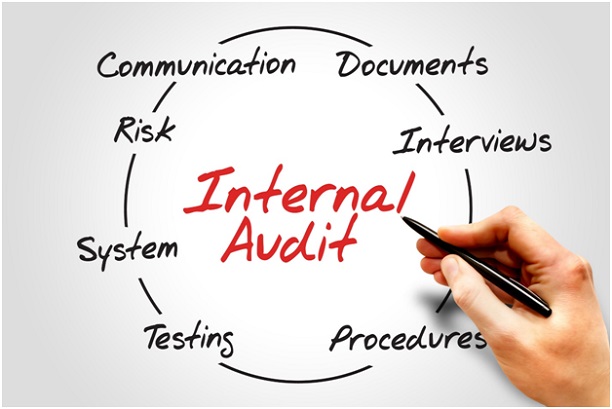
An internal audit checklist is an invaluable tool for comparing a business’s practices and processes to the requirements set out by ISO standards. The internal audit checklist contains everything needed to complete an internal audit accurately and efficiently.
Your ISO 9001 Internal Audit Procedure helps your organization confirm the Quality Management System (QMS) is working effectively and is in line with ISO 9001 standards.
The audit checklist is just one of the many tools which are available from the auditor’s toolbox that help ensure your audits address the necessary requirements. It stands as a reference point before, during and after the audit process and if developed for a specific audit and used correctly will provide the following benefits:

In short, an ISO 9001 internal audit is a routine inspection within the company in which an assigned auditor assesses your organization’s processes and quality management system based on the criteria provided by the latest ISO 9001 standard. Auditors are responsible for informing you of any areas that need improvement in order to meet the standard, in addition to areas that are performing well and are conforming to the standard.
Please note - an internal audit is different from your Testing & Inspection Procedure.
Internal audits aid with preparing for an external audit, which is usually the determining factor of whether your organization is granted ISO 9001 certification.
The internal audits will review a few areas of your organization, including:
Internal audits can be scheduled as frequently as your organization determines is needed in order to improve processes. Some businesses schedule audits once a year, every quarter, or even once a month, at most.
There are a few steps to follow to ensure the highest rate of success for your internal audits. If you follow these steps closely, you should have a great experience throughout the process and have solid results by the end of it.
Before planning out the audit itself, you will want to make sure that everyone on your team has a proper heads-up to your intentions. If not, the results that you may receive running an audit randomly will not give you proper information, making the entire audit process virtually useless. In addition, if your employees and management are prepared for the audit, they will have a better idea of what to expect for the external audit later.
You will want to make sure that process managers are given enough time to wrap up anything they are working on, so you are given the most accurate information possible. So, if you are planning on doing an internal audit, make sure you check in on the progress of projects among management and employees before moving forward and planning the audit.
Next, you will actually want to begin the process of starting the audit. To start, you will want to make sure that it is scheduled accordingly. This includes informing the auditors you are using to determine the most effective time to come and conduct the review.
This is the most important step of the audit process, as auditors can also look at your organization’s audit history and review previous issues that may have been found beforehand. From here, the auditor will let you know the best time to begin the process.
Either an assigned ISO 9001-trained employee(s) from within the company or outside, verified auditor(s) can conduct and oversee the audit. Their role is to make sure everything regarding your company’s processes is performing well and to go over their findings with you. It is recommended that you have more than one auditor, so the process goes smoothly; in addition, it is always better to have more than one set of eyes when it comes to audits. The larger your organization, the more auditors you should have.
After careful planning, the next logical step will be to actually conduct an audit. The beginning of this will be more of a reassurance to you and the auditor that the plan is laid in stone and ready to start.
Many things are done throughout the audit itself, such as the review of all records, observing the success of certain functions, detecting flaws within the system, conversations with employees, and more.
The best reports received from these internal audits are those that not only show areas that are considered to be running poorly but also are able to give out recommendations for areas that can operate much more effectively with adjustments.
These adjustments, also known as corrective actions, can provide process managers and your organization’s systems much more success in the long run.
Once the audit has been thoroughly conducted, the auditors will meet with you, (or whoever the process manager is) to discuss the results that they were able to find. The highlights of this meeting will be to showcase the errors that were found and what tactics can be used to improve those areas.
Having hard evidence of what processes are not producing—in addition to paths to improvement—offered is any process manager’s dream, and it is a reality that can be achieved through an internal audit. What these reports and results will also do is help you save resource costs by utilizing them much more efficiently, as you will now know where time and energy should be spent.
Every now and then, you will want to reflect on the results of the audit and issues that were found that have now been addressed. You will want to review this information with those who provided you with the audit. Compare your standards from before your audit to after to see if there have been any significant changes in performance based on recommended adjustments.
Afterward, rinse and repeat this process over time, as success will not stick around for very long and tweaks will need to be made often to keep assuring improvements are on the rise.

The checklist is a great reference to ensure that the steps of the internal audit are done both effectively and properly. There are two types of audit checklists. These are:
The supplier audit checklist is used to help suppliers identify compliance of an organization with the requirements from ISO 9001 standards. It is about 21 pages altogether and contains quite a bit of information.
The scoring criteria for internal audits are broken up into four different sections. These four sections are:
For the supplier, the audits will be conducted in a manner that was discussed previously, referring to the first step of the audit process above. During these audits, processes will be identified and recorded, as well the auditor providing explanations for the process manager to help them understand how interactions work within the processes.
The following bullets are requirements for the audit directly pulled from the official supplier audit checklist:
For audits of customer-related processes, they are conducted at intervals to:
These points should be considered during the auditing process:
Another great tool that is given in the supplier checklist is the process audit turtle diagram. This gives the auditor questions to consider under the following subjects:
For example, for Process Inputs, questions such as what triggers the process, and where inputs come from, are asked in the diagram. Each box of questions points to another set of questions, helping the supplier to complete the checklist effectively.
For the remainder of the checklist, various subjects are organized into the following table:
Audit Question
Finding (Check)
Audit Evidence
What to Look For
Provide a reference to documentation or records that justify the finding.